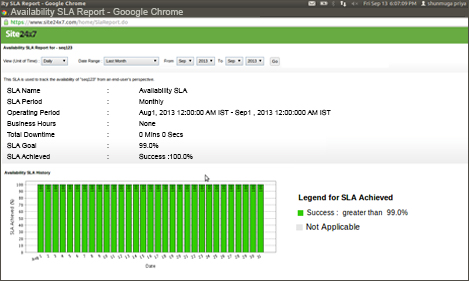Are you slacking in your SLA monitoring?
Anyone familiar with British comedy will recall Basil Fawlty, the terse, rude hotel proprietor of sitcom Fawlty Towers. While Basil became a symbol of frustrated, middle-class England, Fawlty continues to serve as a comedic reminder of how not to do business.
Providing a service your customers can’t live without~(rather than a Fawlty-esque one they never want to re-use)~doesn’t just mean~having robust measures in place to ensure customer expectations are met. It also means setting expectations right from the start. SLAs (service-level agreements) can fulfil this role, helping SMEs and larger businesses and departments within enterprises monitor and control the performance of the service they receive against mutually agreed standards.
So what~kind of metrics should be included in an SLA? Naturally this depends on the service provided but performance metrics for such things as the levels of availability and~response times are necessary in order to ensure the end-user experience is better than~it was for Fawlty’s~unsuspecting~guests. This process can start with breaking the SLA down into three stages, all of which will not only help to keep clients happy but help you sleep at night.
Step 1: Initiation
Creating an effective level agreement means clearly identifying the start and finish date and making the SLA responsibilities clear to those involved. This stage also means articulating what metrics are to be measured and reported on, the performance thresholds and agreeing review periods.
Step 2: Reporting
Agreeing on the reporting mechanism and ensuring it meets with the needs of the metrics~outlined in Stage 1 is essential. Any deviation changes the SLA. Ensure your report contains quantitative data for the proper analysis of service performance, and commentary where for example performance falls below acceptable levels. Reports that provide a visual review of performance over time give a better indication of trends than month-by-month reporting.
Step 3: Management
Management is an important part of the process. After all, data is meaningless if you fail to review, analyse and act on the performance it provides. Carry out service reviews on a regular basis and share this information with the rest of the team. SLA management tools [link to relevant page on Site24x7 site] can expedite this process, making it easy to see how critical websites and web applications are performing.
Picture: Site24x7 Availability Report providing instant visibility into SLA uptime.
Despite the obvious benefits of having an SLA and the tools to manage them, many~SMEs don’t implement SLAs. For a small business with limited resources, this can be due to~concerns that the economic and resource costs of implementing a program will be high. However, the consequences of not implement an SLA can be great. Downtime and any degradation in performance can affect your revenue and brand and damage a business you’ve worked hard to achieve.
For this reason every internet~dependent business should have an SLA for performance and availability of IT resources. Only then can you be sure you are consistently delivering on service, and can help the business grow. And once safe in the knowledge that you – and any third-part service providers– are meeting the right targets, you can leave the Fawlty-esque performance to your competitors. After all, you are in control.
